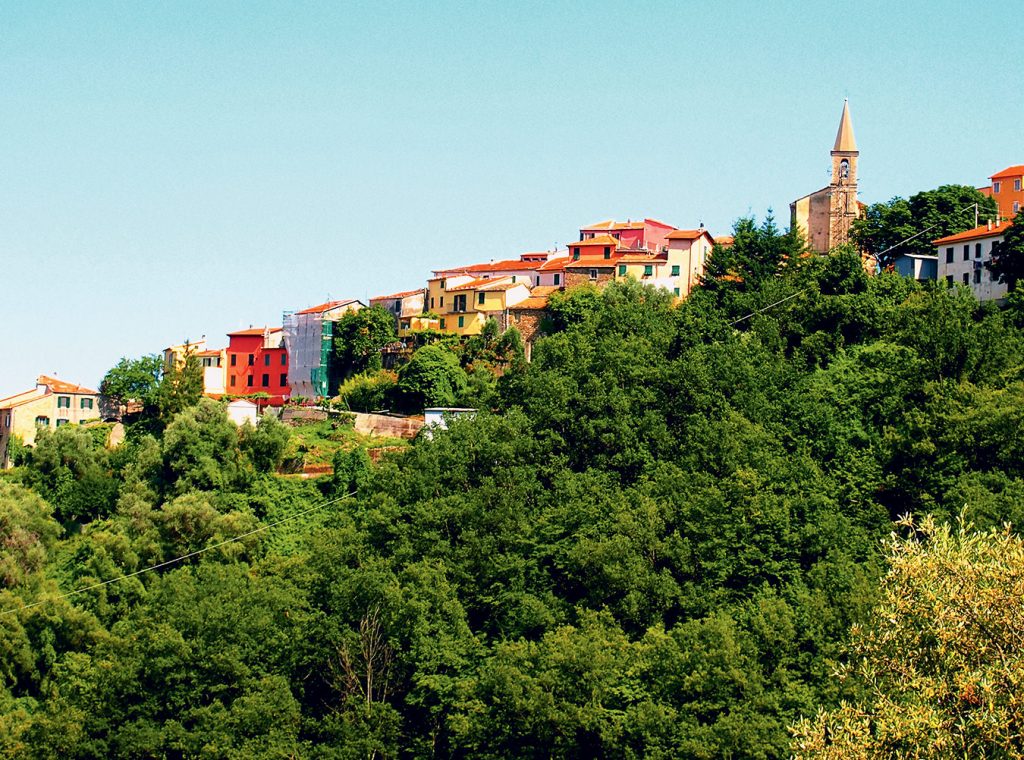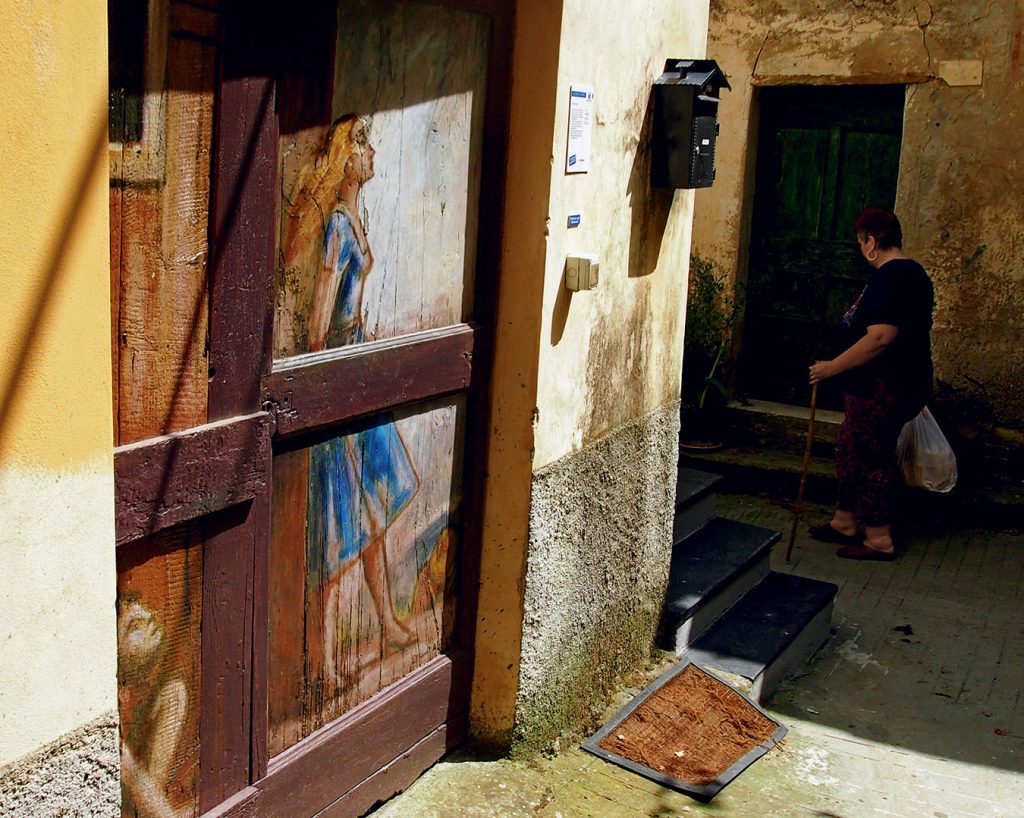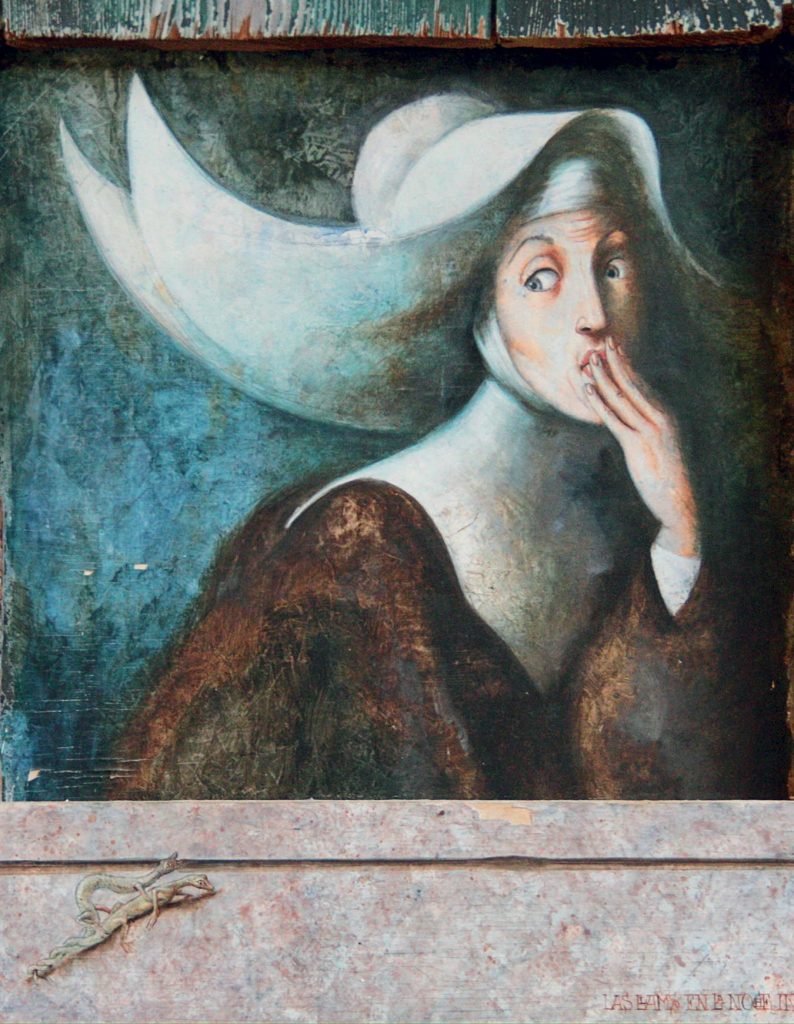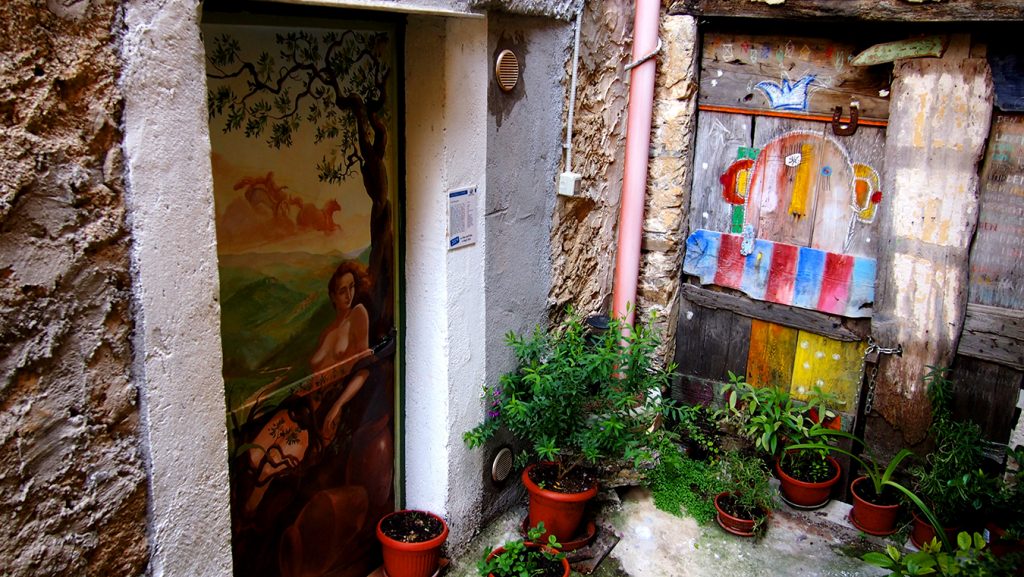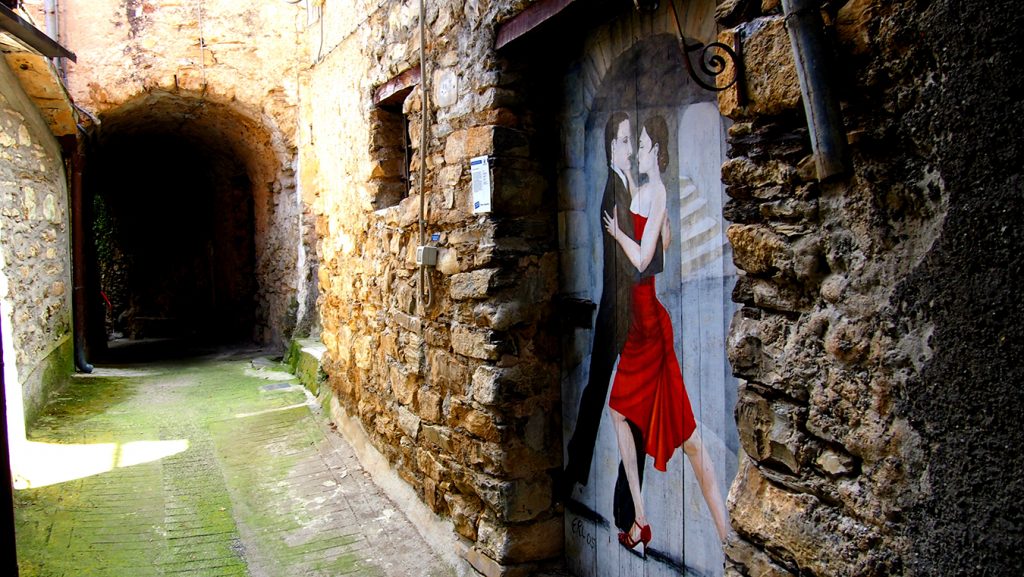Serendipity is the joy of travel. It’s the element guide books cannot provide—the special charm of stumbling over the unexpected. Among my favourite discoveries is a village hidden in the hills behind San Remo—Valloria, the town of painted doors.
In truth I had some help finding it. It was a few years ago on my first visit to this coastal city on the Italian Riviera just a short drive from the French border, famous for the Sanremo Music Festival held each winter. I was staying in a lovely, inexpensive seaside inn called Villa La Brise on the eastern edge of town, run by a young couple named Marco and Tiziana. Tiziana suggested I drive into the hills behind the busy, traffic-choked coastline and find a little town that had transformed itself into an outdoor art gallery.
Driving the back roads of Imperia province was what I was there to do. The hills behind San Remo offer days of glorious exploration—beautiful little towns on every hilltop, most of them throwbacks to a more peaceful time. Many have their own particular quirks. The little hill town of Seborga, for example, declared its independence from Italy in the early 1960s and proclaimed a local flower merchant as Prince. Bussana Vecchia, a town destroyed by an earthquake and abandoned, was rehabilitated in the 60s as an artist commune. Centuries ago, the town of Triora executed a group of local women accused of witchcraft—the town now celebrates that dubious heritage with shops full of witch dolls, witch candy, and even a special witch liqueur.
Valloria was looking for something to revive its flagging fortunes too. Like small towns everywhere—even gorgeous ones on the Italian Riviera—the village was watching its young people leave for larger centres like Imperia and Milan. Local resident Angelo Balestra came up with an idea. Two ideas actually—an open-air art project and a party. Artists would be invited to paint the town’s doors, given complete artistic freedom to create their own works. When the paintings were revealed the town would celebrate. Long tables would be set up under the olive trees so hundreds of people could eat, drink, and dance. A Valloria fai baldoria, they said—Go crazy in Valloria. The first event was a smash, and the town began holding them twice in each summer in July and August. The annual celebrations—held this year over July 6 and 7 and August 3 and 4—injected new life into a dying town.
Long tables would be set up under the olive trees so hundreds of people could eat, drink, and dance. A Valloria fai baldoria, they said—Go crazy in Valloria.
After a brief journey along winding mountain roads clearly not designed for tour buses, I arrived in Valloria. It was just before noon and the town was so quiet it was as though transcontinental jet flight had yet to be invented. This is Italy, after all. I had thought there might be no corner of it still unspoiled by mobs.
There’s a little parking lot beyond which cars cannot go, and beyond it the town winds around the side of its little hill. Along the streets and staircases old wooden doors are decorated in styles that range from abstract to surreal to whimsical (perhaps most popular is a trompe l’oeil creation that shows a shocked nun observing two lizards copulating on the door sill).
But it wasn’t the doors that charmed me most on that first visit. I climbed the hill that afternoon, finding at the top an abandoned stone building—a church? A crypt?—and beside it some old benches facing pure enchantment. Below me were spread valleys and hills, each with their own little villages, and behind them all the Mediterranean. I sat for at least an hour, undisturbed. On the way back down the hill I cut over to a small field of purple flowers, attended by butterflies and bees, including shiny blue carpenter bees; another hour lost to photography.
It wasn’t until two years later I would finally get to the party. By early evening the tables that lined pathways through terraced hillside olive groves were already full of revellers. The weather and the hospitality were warm, and considering this was dinner for several hundred the food was excellent—a four-course meal, accompanied naturally by plenty of wine.
As a visiting foreigner they even put me on TV. I attempted to explain to a reporter from the local station what had brought me back to this little town tucked away in the Ligurian hills. I tried my very poor Italian for a bit but had to switch back to English. Mi scusi—I don’t know the Italian word for “serendipity”.
Photo 03: Stefanx.

